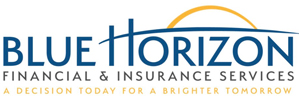Retirement is a time to enjoy life, pursue your passions, and spend time with loved ones. However, to achieve this, planning and creating a comprehensive retirement plan is essential. The earlier you start planning, the better off you’ll be in the long run. With the uncertainty of Social Security and the rising cost of living, it’s more important than ever to have a solid plan for your retirement years. This guide will provide tips on saving, investing, and preparing for your golden years.
Start With a Retirement Goal
The first step in creating a comprehensive retirement plan is to set a retirement goal. You need to know how much you will need to retire comfortably. Consider your current lifestyle and expenses and determine how much income you’ll need to maintain that lifestyle in retirement. You should also factor in any potential expenses you may have in the future, such as healthcare costs.
Once you have determined your retirement goal, you can begin to save and invest accordingly. You can use a retirement calculator to estimate how much you’ll need to save each year to reach your retirement goal.
Maximize Your Retirement Accounts
One of the most effective ways to save for retirement is through tax-advantaged retirement accounts. Contributions to these accounts are tax-deductible, allowing you to save on taxes while you save for retirement. There are two primary types of retirement accounts: traditional and Roth.
Traditional retirement accounts, such as 401(k)s and traditional IRAs, allow you to contribute pre-tax dollars, reducing your annual taxable income. The money grows tax-free until you withdraw it in retirement, taxed as ordinary income.
Roth retirement accounts, such as Roth 401(k)s and IRAs, allow you to contribute after-tax dollars. The money grows tax-free, and you can withdraw it tax-free in retirement.
Maximizing your contributions to retirement accounts is essential to comprehensive retirement planning. The more you save, the more you’ll have in retirement.
Diversify Your Investments
Investing is a critical part of any comprehensive retirement plan. However, it’s essential to diversify your investments to minimize risk. Diversification means spreading your investments across different asset classes, such as stocks, bonds, and real estate.
Stocks offer the potential for high returns but come with more risk. Bonds offer lower returns but are less risky. Real estate offers the potential for both income and appreciation but requires a more significant upfront investment.
Diversifying your investments can help you minimize risk while achieving your retirement goals. A financial advisor can help you determine the right mix of investments based on your risk tolerance and retirement goals.
Plan for Healthcare Costs
One of the most significant expenses in retirement is healthcare. Planning for these expenses and factoring them into your retirement plan is essential. Medicare is available to those over 65 but doesn’t cover all healthcare expenses.
Long-term care is a significant expense that many retirees face. Long-term care insurance can help cover these costs, but it’s essential to start planning early as premiums increase with age.
Consider Your Social Security Benefits
Social Security is a significant source of income for many retirees. However, it’s essential to consider the timing of your benefits carefully. You can start receiving benefits as early as 62, but your benefit amount will be reduced. Waiting until full retirement age (66 or 67, depending on your birth year) will increase your benefit.
Delaying your benefits until age 70 will increase your benefit amount even further. However, it’s essential to consider your life expectancy and financial situation when deciding when to take your benefits.
Create a Comprehensive Estate Plan
Estate planning is an essential part of comprehensive retirement planning. Having a plan in place is critical to ensure your assets are distributed according to your wishes after you pass away. A comprehensive estate plan should include a will, power of attorney, healthcare directive, and trust.
A trust can help you minimize estate taxes and avoid probate, but it’s essential to consult with an estate planning attorney to determine if a trust is right for you.
Conclusion
Comprehensive retirement planning is crucial to financial stability and Security as you approach the later stages of your career. You can enjoy a worry-free future by setting a retirement goal, maximizing your retirement accounts, diversifying your investments, planning for healthcare costs, considering your social security benefits, and creating a comprehensive estate plan. Remember, the earlier you start planning, the better off you’ll be in the long run.





